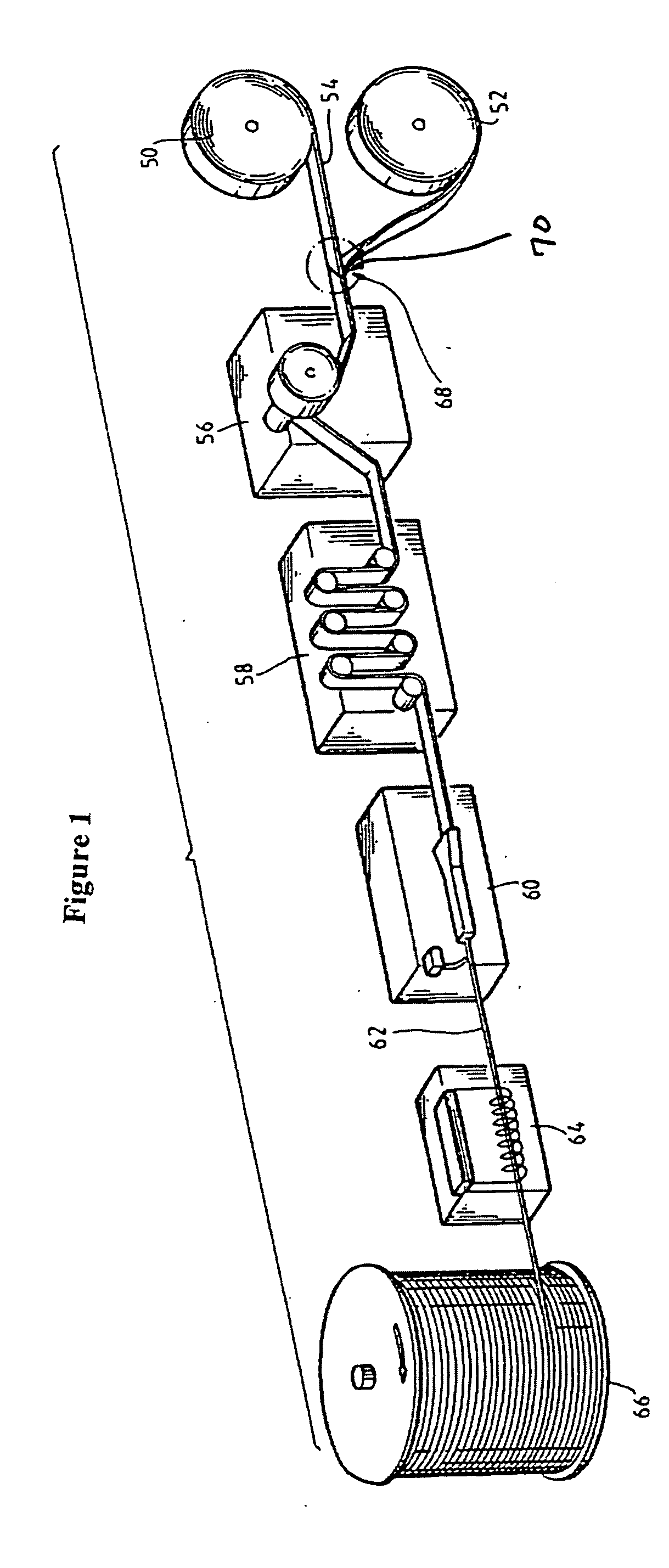Downhole recovery production tube system
a production tube and recovery technology, applied in the field of oil well production tube system, can solve the problems of unavoidable improvement, rigidity, and prone to leaking recovered fluid from segmented production tubes, and achieve the effect of safe extension of electrical power lines, simple tack-welding, and elimination of unstabilizing movement of power tubes
- Summary
- Abstract
- Description
- Claims
- Application Information
AI Technical Summary
Benefits of technology
Problems solved by technology
Method used
Image
Examples
Embodiment Construction
[0033] Referring to FIG. 1, a prior art system of producing a tubing string from flat sheet metal strips is shown. Such is disclosed in U.S. Pat. No. 4,863,091 and U.S. Pat. No. 5,191,911, each of which is hereby expressly incorporated by reference. In this system, the apparatus includes master coils 50 and 52, an accumulator 56, a feed stock conditioner 58, a tube former 60, a heat treater 64, and a reel 66. As known in the art, stock metal is deployed from master coils 50 and 52 and is “run through” accumulator 56. Differential action on the part of accumulator 56 allows a second length of strip stock to be spliced onto the trailing end of a preceding length while the latter is still housed in accumulator 56. Splice 68 is formed by cutting strip ends to be spliced at supplementary angles, including an acute angle of about thirty degrees. A small piece 70 is attached to each end of splice joint 68 to act as a heat sink and provide for improved weld strength. A welding tool is passe...
PUM
| Property | Measurement | Unit |
|---|---|---|
| length | aaaaa | aaaaa |
| length | aaaaa | aaaaa |
| acute angle | aaaaa | aaaaa |
Abstract
Description
Claims
Application Information
 Login to View More
Login to View More - R&D
- Intellectual Property
- Life Sciences
- Materials
- Tech Scout
- Unparalleled Data Quality
- Higher Quality Content
- 60% Fewer Hallucinations
Browse by: Latest US Patents, China's latest patents, Technical Efficacy Thesaurus, Application Domain, Technology Topic, Popular Technical Reports.
© 2025 PatSnap. All rights reserved.Legal|Privacy policy|Modern Slavery Act Transparency Statement|Sitemap|About US| Contact US: help@patsnap.com



